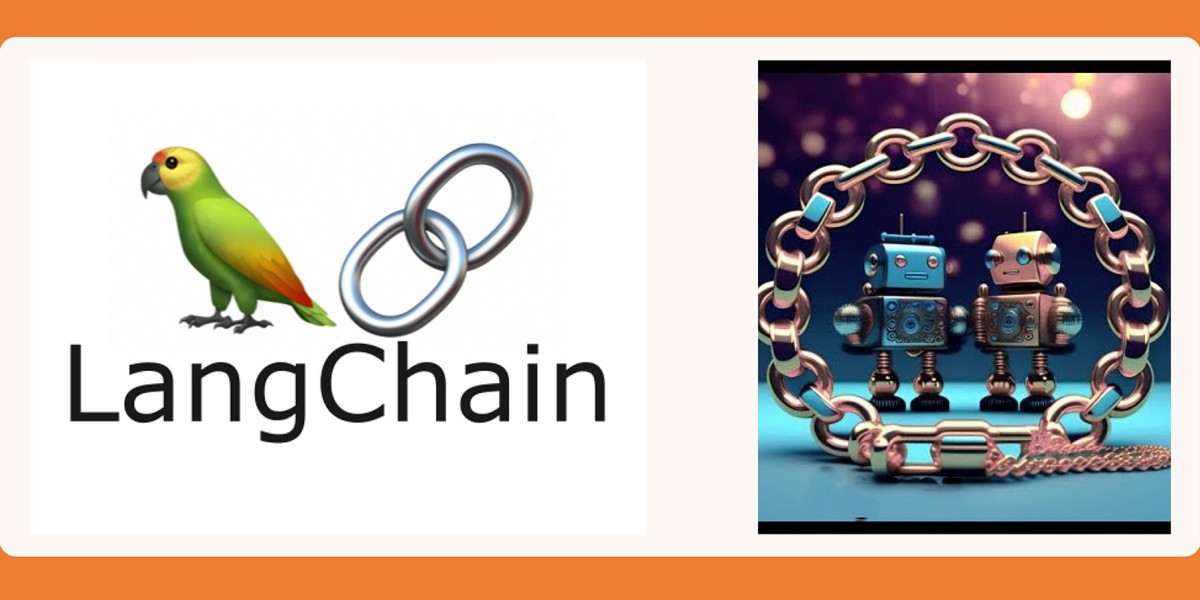1. What is LangChain?
LangChain is a framework specifically designed for developers working with language models. It provides tools to:
- Connect LLMs to external data sources.
- Enable interaction with APIs and databases.
- Chain together prompts, logic, and outputs for complex workflows.
LangChain is particularly well-suited for building robust, production-grade applications that need more than single-prompt interactions with an LLM. It provides a structured approach to integrating LLMs with other software components, facilitating the development of end-to-end systems that leverage the unique strengths of language models.
2. Core Concepts of LangChain
LangChain revolves around several core concepts, which together form its powerful and flexible framework. These include:
a. LLMs and Prompts
At the heart of LangChain are large language models and the prompts that guide their behavior. LangChain allows developers to:
- Create reusable prompt templates.
- Dynamically adjust prompts based on application context.
- Handle inputs and outputs systematically for consistency.
b. Chains
Chains in LangChain are sequences of operations or steps that combine to accomplish a task. For example, a chain might:
- Receive user input.
- Query a database or API for additional context.
- Pass the information to an LLM for processing.
- Format the output for the user.
LangChain supports multiple chain types, including simple linear chains, branching chains, and even more complex workflows.
c. Tools and Plugins
LangChain integrates with external tools and plugins, such as:
- Search Engines: To retrieve up-to-date information.
- APIs: For querying external services.
- Databases: To fetch structured data.
- Custom Code: To execute application-specific logic.
By combining LLMs with these tools, developers can build intelligent systems that extend beyond text generation to perform practical and impactful tasks.
d. Memory
Memory in LangChain allows applications to maintain context over multiple interactions. For instance:
- A customer support chatbot can remember past queries from the same user.
- A virtual assistant can store preferences for personalized responses.
LangChain provides different types of memory modules, ranging from basic session memory to more complex long-term memory implementations.
e. Agents
Agents are dynamic systems that use LLMs to decide which actions to take based on a given input. They can:
- Decide which tool or API to use.
- Dynamically adjust workflows based on user input.
- Perform multi-step reasoning tasks.
Agents make LangChain particularly powerful for building adaptive and intelligent applications.
3. Architecture of LangChain
LangChain’s architecture is modular, making it flexible and adaptable to different use cases. It consists of the following layers:
a. Model Layer
This layer represents the underlying LLMs (e.g., OpenAI’s GPT models, Hugging Face models). LangChain supports multiple LLM providers, allowing developers to switch between models easily.
b. Data Connectivity Layer
LangChain provides connectors to integrate with various data sources, such as:
- Databases (SQL, NoSQL, etc.)
- Cloud storage (e.g., AWS S3, Google Cloud Storage)
- APIs
- Local files
c. Logic Layer
The logic layer defines workflows, chains, and agent behavior. This is where developers can orchestrate how data flows through the system, how tools interact, and how outputs are processed.
d. Interface Layer
This layer deals with the user-facing components of the application, such as web apps, mobile apps, or conversational interfaces. LangChain provides tools to integrate seamlessly with various frontend frameworks and platforms.
4. Key Features and Capabilities
LangChain offers several standout features that make it a compelling choice for developers:
a. Prompt Engineering
LangChain simplifies prompt engineering by enabling developers to create reusable and dynamic templates. This helps ensure consistent performance across different tasks.
b. Tool Use
The framework’s integration with external tools allows applications to go beyond static text responses. For example:
- A weather app can fetch real-time data from a weather API.
- A knowledge assistant can query a database for specific details.
c. Interactive Agents
LangChain’s agents can dynamically decide on actions, such as:
- Fetching information from a search engine.
- Running calculations or code.
- Routing queries to the appropriate tools or services.
d. Memory Management
Applications built with LangChain can maintain context across interactions. This is critical for tasks like multi-turn conversations, personalized recommendations, and context-aware assistance.
e. Customizability
LangChain’s modular design allows developers to customize every aspect of the system, from prompt templates to agent logic and tool integrations.
5. Use Cases of LangChain
LangChain’s flexibility makes it suitable for a wide range of applications. Some prominent use cases include:
a. Conversational AI
LangChain’s memory and agent capabilities make it ideal for building conversational AI systems, such as:
- Customer support chatbots.
- Virtual personal assistants.
- AI tutors or mentors.
b. Question-Answering Systems
LangChain can be used to build sophisticated question-answering systems that:
- Retrieve information from structured databases.
- Use search engines for up-to-date answers.
- Combine multiple sources for comprehensive responses.
c. Content Generation
LangChain can assist in generating:
- Articles, blogs, and reports.
- Marketing copy and product descriptions.
- Code snippets or technical documentation.
d. Automation Workflows
By chaining multiple steps together, LangChain can automate complex workflows, such as:
- Parsing and analyzing emails.
- Generating and sending automated reports.
- Handling customer onboarding processes.
e. Data Extraction and Analysis
LangChain’s ability to integrate with APIs and databases makes it a powerful tool for extracting and analyzing data. For example:
- Extracting insights from documents.
- Summarizing research papers.
- Analyzing customer feedback.
f. Interactive Storytelling and Games
LangChain’s agents and memory features enable the creation of interactive storytelling applications and text-based games with dynamic, adaptive narratives.
6. How to Get Started with LangChain
Getting started with LangChain is straightforward. Here’s a step-by-step guide:
Step 1: Install LangChain
LangChain can be installed via pip:
pip install langchain
Step 2: Set Up an LLM Provider
To use LangChain, you’ll need access to an LLM. You can configure it with providers like OpenAI, Hugging Face, or Cohere.
Step 3: Build a Simple Chain
Create a basic chain to process user input and generate a response. For example:








